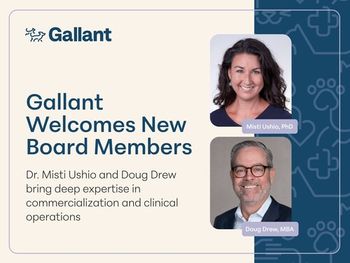
Good Medicine Good Business
Efficient workflow requires immediate attention, organization
It's 10 p.m. Do you know where your
medical records are?
Sleeping on a desk?
In a later-to-be-written file?
Nestled in the medical master-filing bin system?
Or perhaps in a "hot bin"?
On busy days, it is so easy to set aside a record and say, "I'll finish that up later."
Then, the later-to-be-written pile (Dead Zone) grows to 10, then 20.
Medical records in the "dead zone" are out of circulation, out of the hand of the staff, and when a client calls, the record is missing in action, so no action can be taken.
Consider the dog with reproductive problem brewing: Coordination must be made between the laboratory running the hormone assay, the client with the bitch getting cytology, the stud-dog owner in some city waiting for the word to run to his veterinarian to get semen collected to ship to a courier for delivery to the bitch's veterinarian.
Got that, right?
But that record is under a pile of other stuff on Dr. Repro's desk; you have entered ... the dead zone.
We know it happens. And the longer the delay before the records are written, omissions happen, too. Perhaps 20 percent of the data is left off the record.
Some practices document records at the end of the day; some only do it once a week!
The missed thoughts, medications and an unclear plan undermine quality medicine and service.
Homecare instructions get muddled; follow-up recommendations are lost, and inconsistencies become visible to clients.
This pattern leads to frustrations; angers flare. Unhappy clients, sick animals and a befuddled staff can lead to a lost project and maybe a lost client.
The fees, perhaps documented on a "travel sheet," might not match the medical record, and more confusion is infused with the patient-care paradigm.
A computer invoice cannot function as a medical record.
With all the legal challenges these days combined with the pressure for productivity, it is vital for records to be timely, accurate and active, or hot.
The medical record should be a dynamic central figure in the patient healthcare formula, and as such, it must be in the middle of the patient-care mix.
Securing the data
Medical records that are recreated from treatment boards, travel sheets and notes in our pockets inevitably have errors and omissions.
For a smooth-running practice, the medical records must be completed as the veterinarian is thinking of the case.
Veterinarians' entries must be made before any duty can be performed.
Patient care happens sequentially: exam, assessment, discussion, diagnostics, medications, surgery, post-operative care, discussion, release and follow-up appointments — including a six-month follow-up on long-term outcome.
In a records-based practice, the record must be close to the action; bins for those waiting for appointments, tomorrow's patients, telephone conferences and patient follow-ups can help doctors and staff realize that tasks are undone.
Hot bins work in this situation of sequential care.
The completed record then must go to a hot bin, and we need several labeled and specific hot bins.
That's so hot
A hot bin is a place where something must be accomplished — such as a medication must be given, a refill must be made bin, a letter must be written, a telephone call must be made bin, a laboratory test is pending, radiographs must be taken, or food must be given, as well as a bin for tomorrow's patients and those in the waiting room. (See Table 1 for sample medical record entries.)
Table 1
No matter how paperless we become, the number of human hands with paper cuts has skyrocketed. So even in paperless places, a manual record is needed to hand enter that a medication was given by a specific individual at a particular time to a specific patient.
Once in a hot bin, a staff member can give a medication, prepare release instructions, give food, take them for a walk, take a radiograph and provide surgical preparations.
Hot bins are how we improve productivity. When a practice has, say, 20 bins, then 20 different employees can be accomplishing tasks while the veterinarian moves to the next patient.
The current national average of 3.5 employees per veterinarian generates a bottleneck in clinical medicine; it's a productively limiting factor due to infrastructure weakness between the veterinarian and the staff attending to the patient.
If you double the employee ratio to seven, then you can double the gross revenues.
Hot bins allow more employees to be accomplishing patient tasks, which generates more income and allow a practice manager to delegate essential tasks to keep productivity high.
Getting started
- The records must never get to the dead zone.
- The medical record also must have a completion circle to determine what was done and by whom.
- Invoices can be made directly from the medical record.
- Review your workflow, and compare it with the hot bin smorgasbord (Table 2) to streamline your operations.
Table 2
Dr. Riegger, dipl. ABVP, is the chief medical officer at Northwest Animal Clinic Hospital and Specialty Practice. Contact him at
Newsletter
From exam room tips to practice management insights, get trusted veterinary news delivered straight to your inbox—subscribe to dvm360.






